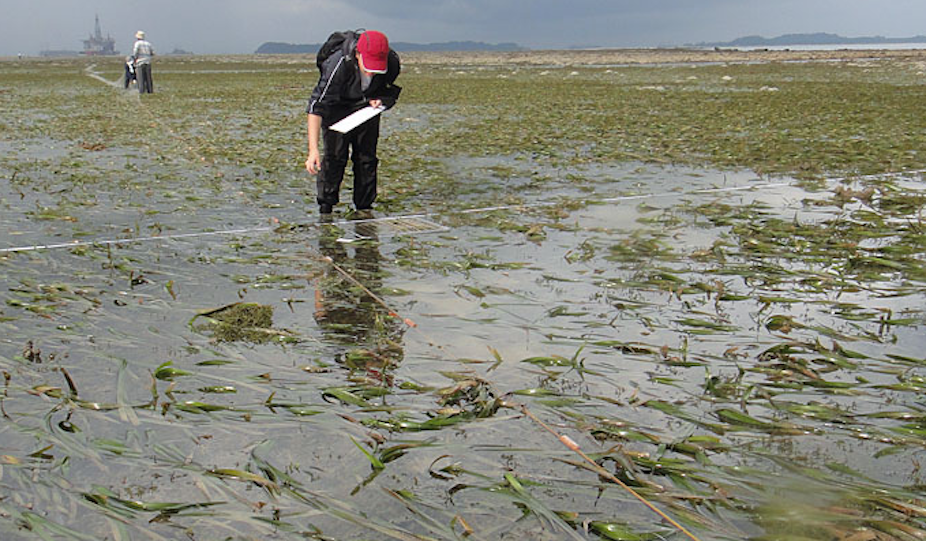The image of the bearded, grubby ecologist, out-dated spectacles askew and sporting an eccentric grin of geeky, scientific relish, is one that is shared by many, including novice ecologists themselves.
But as ecology has matured into a full-fledged, hard-core, mathematical science on par with physics, chemistry and genetics (and is arguably one of the most important sciences of our times given how badly we’ve trashed our only home – planet Earth), its sophistication now threatens to render many of the traditional aspects of ecology redundant, or at least, much less important.
As a person who cut his teeth in field ecology (with all the associated dirt, dangers, bites, stings, discomfort, thrills, headaches and disasters), I’ve had my fair share of fun and excitement collecting ecological data. There’s something quaintly Victorian about the romantic and obsessive naturalist collecting data to the exclusion of nearly all other aspects of civilised life. The intrepid adventurer in some of us takes over (probably influenced by the likes of David Attenborough) and we convince ourselves that our quest for the lonely datum will heal all of the Earth’s ailments.
Err, probably not.
As I’ve matured in ecology and embraced its mathematical complexity and beauty, the recurring dilemma is that there are never enough data to answer the really big questions. We have sampled only a fraction of extant species, we know embarrassingly little about how ecosystems respond to disturbances, and we understand next to nothing about the complexities of ecosystem services. And let’s not forget our infancy in quantifying extinction synergies and predicting how human endeavour and climate change will affect ecosystems of the future. Multiply this uncertainty by several orders of magnitude for ocean life.
The upshot is that ecologists have been searching for proxies and indicators of biodiversity patterns and processes. The ultimate aim is to predict how they work (or fail) based entirely on decidedly non-biological features.

A case in point is one that I’m most familiar with – the use of “surrogates” in marine ecology. This uses a relatively easy-to-sample species (or group of them) to predict the distribution of many more species. We have also done some work to predict coral reef fish diversity using little more than the position of the reef (latitude and distance to shore), and we have inferred the extinction risk of coral reef fish using nothing more than the shape and isolation of reefs on which they live.
I even remember once that Hugh Possingham wished out loud at a conference that he hoped we’d never have to collect real biological data again if we got our maths right. That might be a little far-fetched, but it highlights my main point.
A new study we published recently demonstrates this component well. Thanks to the hard work of one of my post-doctoral fellows and several clever colleagues, the paper tests a fairly simple idea – by taking a photo of an area where animals hang out, one can estimate how many different species are there.
We used datasets comprising painstakingly collected surveys of coral reef fish in the Great Barrier Reef, and compared these to habitat photos taken at spatial scales ranging from single transects to entire reef complexes. We then measured the amount of “complexity” in the photo using something called the “mean information gain”. This metric essentially measures how complex the image is; in other words, it’s a proxy for habitat complexity, which tends to correlate rather well with the number of species in that particular area.
It turns out that we could explain up to 29% of the variance in fish species composition, 33% in total fish abundance, and 25% in fish community structure.
Now, this might not seem like a terribly high predictive capacity, but in ecology, it explains a remarkably large component of these biodiversity measures relative to most other studies. And all this from merely taking a photograph.
I’m not suggesting (as the title of this exposé implies) that we need to abandon all ecological sampling studies; however, we should be constructing ever-more-efficient ways to estimate biodiversity patterns and processes using such short cuts. They’re less time-consuming, more cost-effective and potentially cover areas that are difficult or impossible to sample directly.
A version of this article appeared on Corey’s blog, ConservationBytes.

